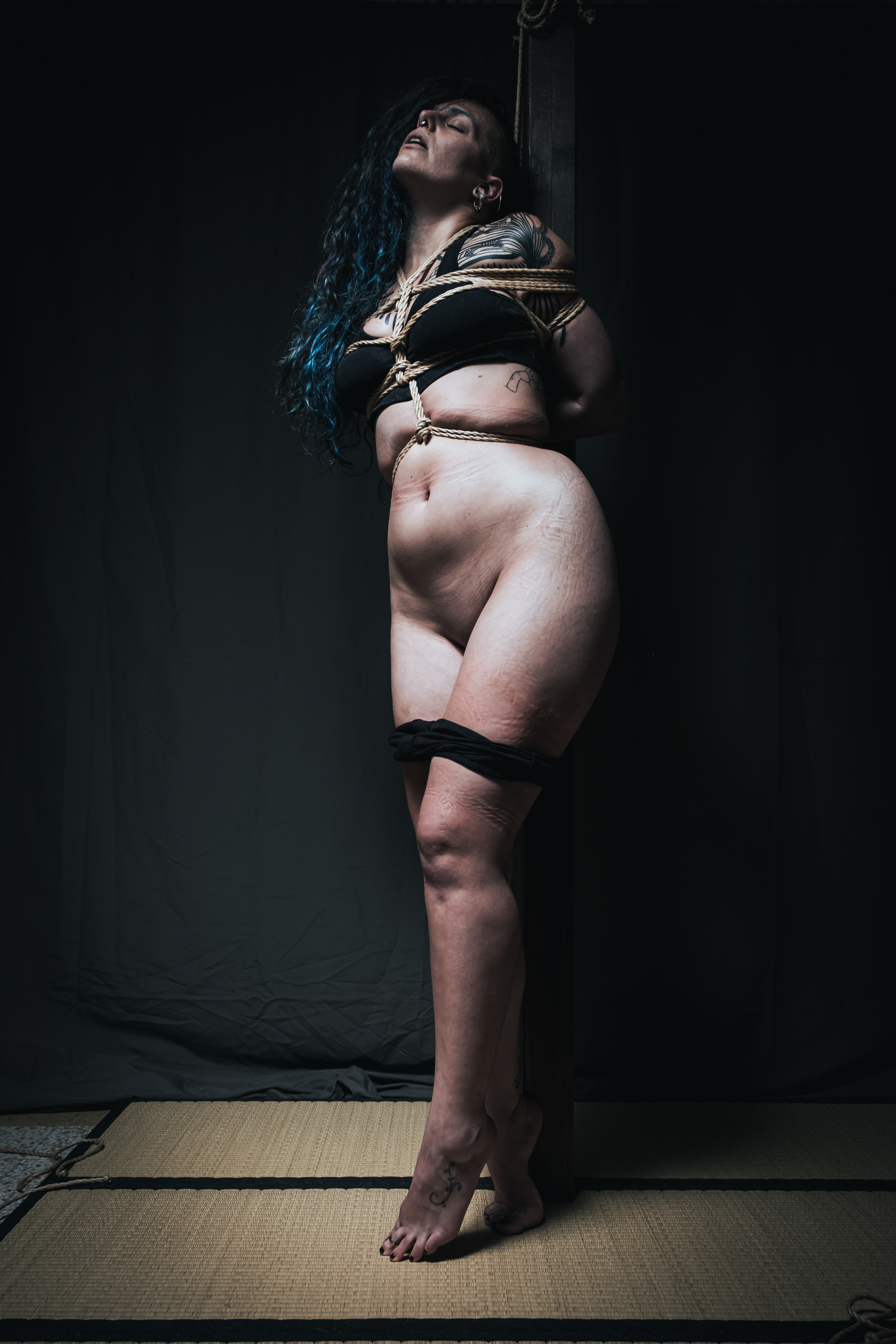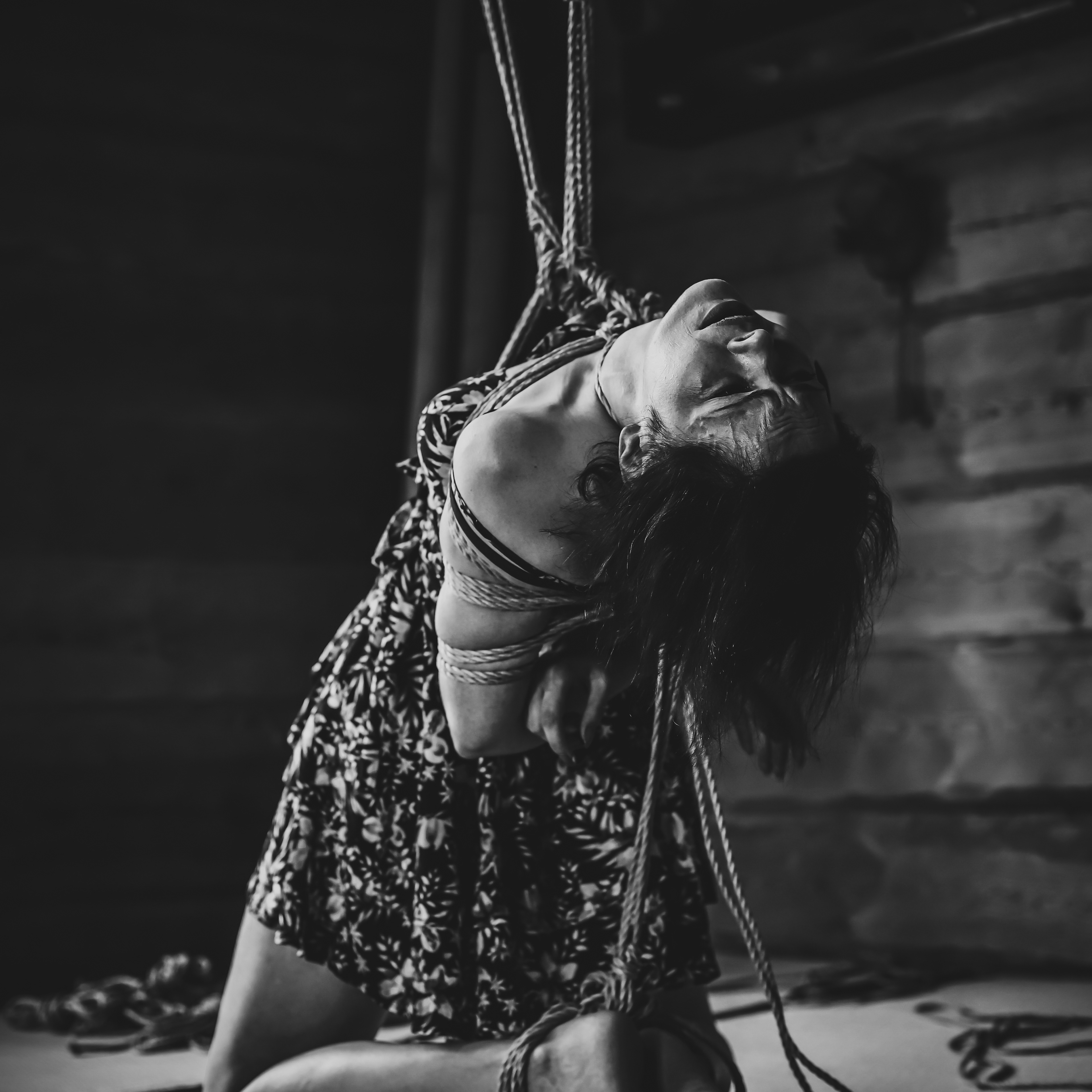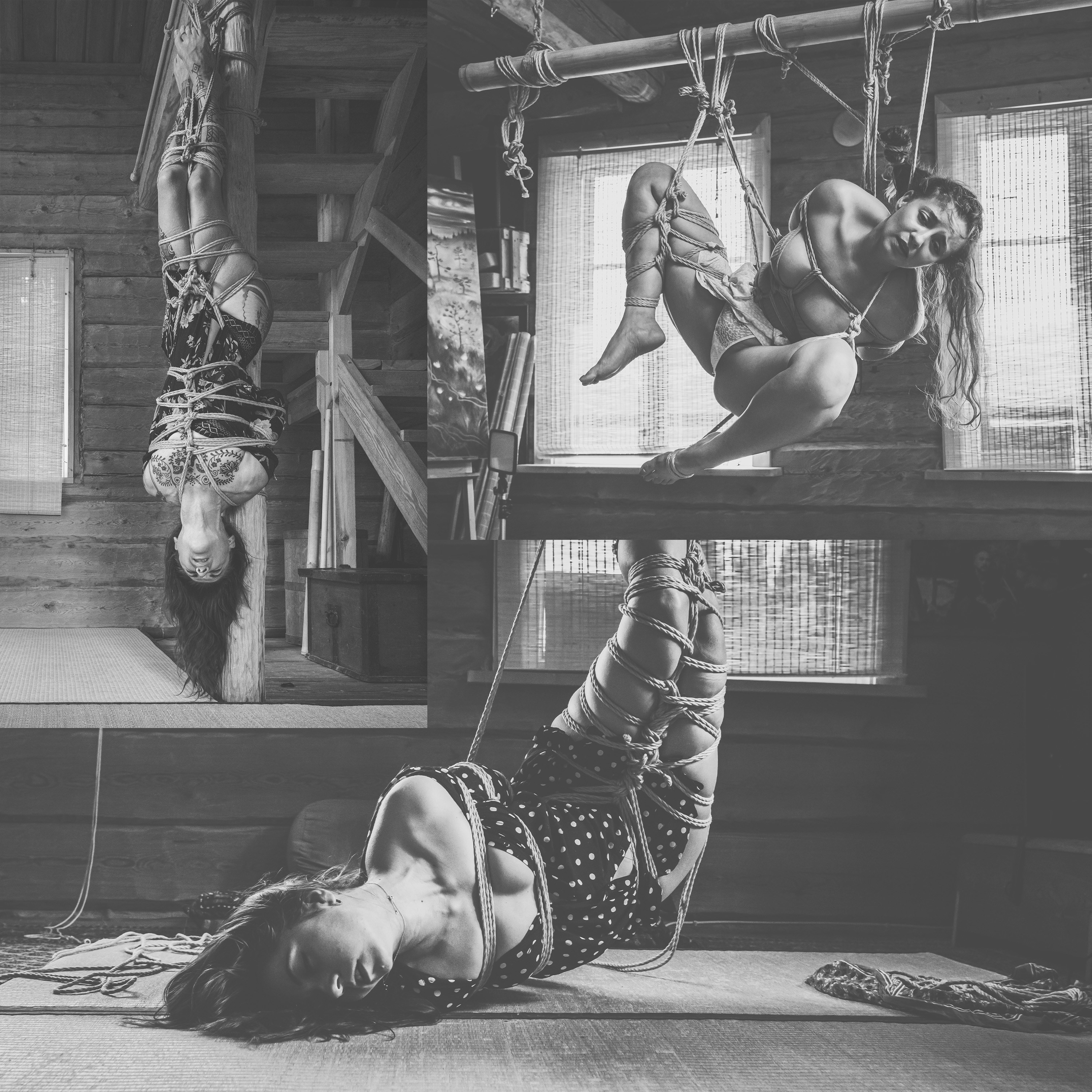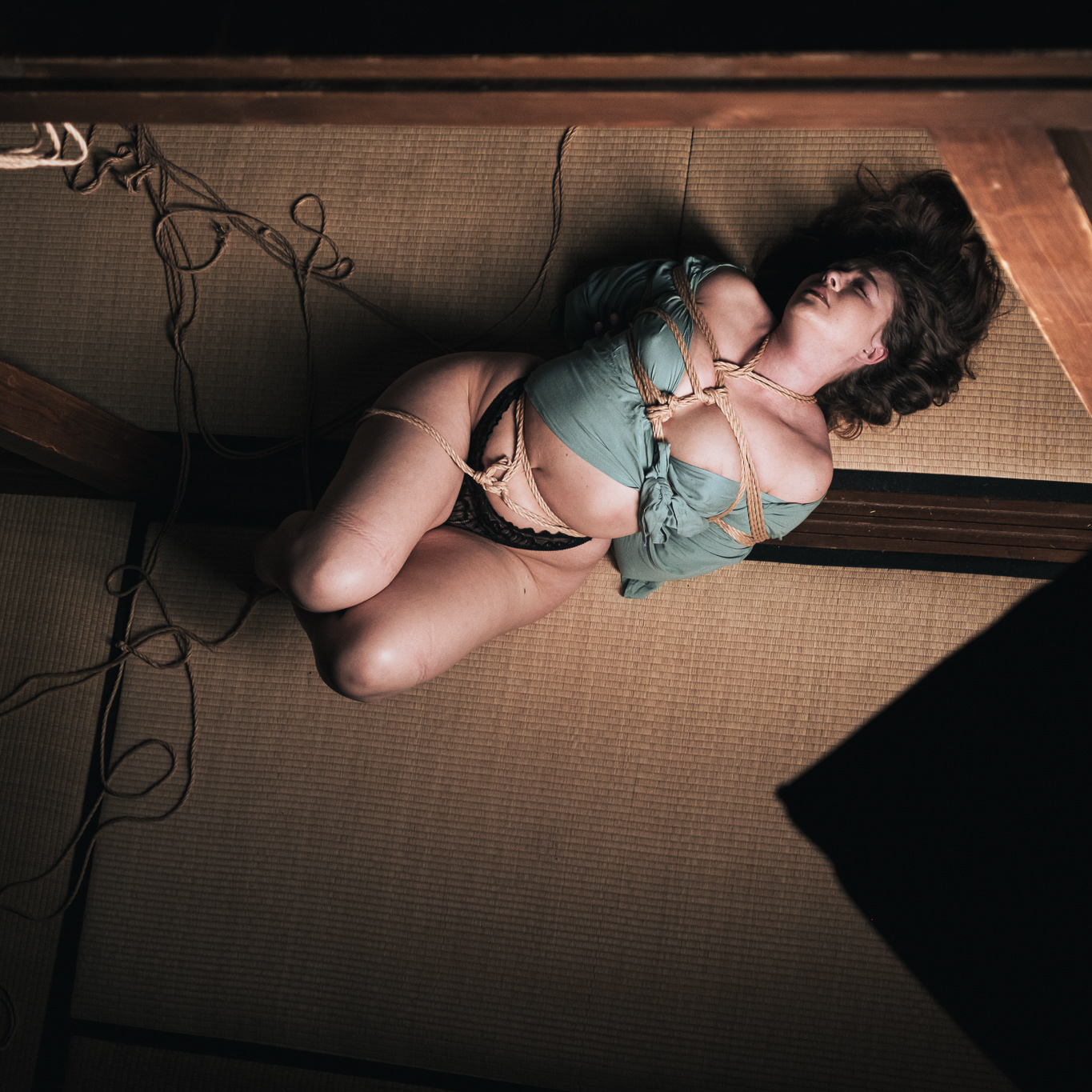






LA MIA RABBIA MI PROTEGGE
“È nell’infanzia che si impara di solito a vedere la rabbia come qualcosa di poco femminile, sgradevole ed egoista. A molte di noi è stato insegnato che la rabbia sarà un peso per gli altri e ci renderà fastidiose e antipatiche.
Che allontanerà le persone che ci vogliono bene e scoraggerà quelle che vorremmo attrarre. Che ci deformerà il viso e ci imbruttirà. Questo vale anche per coloro che sono costrette a usare la rabbia per difendersi in situazioni tese o pericolose. Alle bambine non si insegna tanto a riconoscere o gestire la rabbia quanto a temerla, ignorarla, nasconderla e trasformarla»
Chemaly - La rabbia ti fa bella
Nel corso degli anni la mia esperienza da bottom si è decisamente complessificata in termini di emozioni attraversate e fantasie esplorate, anche grazie al prezioso confronto con altr3 bottom, credo sia una fisiologica evoluzione, ma c’è una sfumatura che è rimasta costante, ed è la voglia di dare spazio alla mia rabbia all’interno delle corde. Non si tratta di fare la brat, non ho alcun interesse a riversare la mia frustrazione sulla persona che mi sta legando, a cui anzi sono grata per permettermi di esplorare una dimensione introspettiva di ascolto e cura.
Si tratta decisamente di altro, e questo altro mi ha sempre visto refrattaria a quell’idea di accettare ed abbandonarsi nelle corde a cui spesso si fa riferimento quando si parla di bottoming. Nella mia sfera personale ho una particolare avversità rispetto alle regole e alle gerarchie, ma allo stesso tempo sono costretta ad accettare ingiustizie, diritti negati, disparità e dinamiche oppressive di un sistema che non mi rappresenta.
Mi è stato dunque chiaro sin da subito che nè l’essere una brat, nè la totale e devota accettazione delle corde rispondevano alle mie necessità di esplorare mondi inaccessibili e fantastici del mio subconscio kinky.
Certamente non biasimo chi invece in queste due modalità trova il proprio spazio di espressione, semplicemente non è il mio. Mi scuso in anticipo per quella che sembrerà una lunga digressione, ma arriverò ad un punto, lo prometto, spoiler: l’intersezione tra rabbia, stereotipi di genere e sessualità dissidente.
Nel processo di decostruzione e ricostruzione iniziato grazie al femminismo, una delle emozioni che ho imparato ad osservare con più consapevolezza è proprio quella della rabbia. In un paradosso di genere abbastanza complesso, alle persone socializzate come uomini non è concesso esternare alcun tipo di emozione se non attraverso la rabbia, così, crescendo, interiorizzano che la rabbia non sia un’emozione, quando invece è semplicemente l’unica apparentemente a loro concessa, ed è quindi un tipico stereotipo di genere considerare le donne troppo emotive per il semplice fatto di esternare un ventaglio di emozioni più ampio e complesso. Contestualmente l’espressione di rabbia per le persone socializzate come uomini è segno di forza ed è associata ad una sensazione di potere, mentre per quelle socializzate come donne, la rabbia è un’emozione disdicevole sia da provare che da esprimere, associata ad una dimensione di totale impotenza: la rabbia femminile, anche quando legittima e necessaria, sarà l’ennesimo pretesto per invalidarne la ragione e l' origine.
Sostanzialmente la donna, essendo culturalmente associata al concetto di cura, di maternità, di dolcezza, se “perde le staffe” è considerata isterica.
Le opinioni più diffuse, ma chiaramente sessiste e pregiudizievoli (quelle che potremmo scientificamente definire come le ''chiacchiere da bar'') parlano di cause legate alla mancanza di una figura maschile al proprio fianco oppure, ancor peggio, alla privazione di relazioni sessuali falliche.
Ma non solo: il controllo del tono (tone policing) è una delle tante pratiche che vengono attuate a livello sociale per controllare e reprimere la rabbia delle donne. Sono davvero infinite le volte in cui mi è stato detto:
“il contenuto di quello che esprimi è giusto, ma dicendolo in modo così aggressivo passi dalla parte del torto” negando, invalidando e sminuendo sistematicamente la mia rabbia. E questo avviene anche sistemicamente quando si esprime rabbia su tematiche come violenza di genere ed omolesbobitransfobica, medicina di genere, divario di genere in termini di retribuzione, impegno di cura femminile non retribuito, carico mentale etc etc etc
Sino a qualche decennio fa la rabbia nelle donne è stata classificata assente e sostituita dal dolore e dalla rassegnazione o, addirittura, equiparata a rabbia auto-orientata, auto-distruttiva e colpevolizzante, a tratti di isteria o addirittura alle conseguenze del morso di un ragno, la celebre ''tarantolata".
La rabbia può essere dannosa e (auto)distruttiva, ma è anche un’emozione carica di speranza e proiettata verso il futuro. Ci si arrabbia quando si percepisce un’ingiustizia, una prevaricazione, una minaccia.
La rabbia dimostra passione e coinvolgimento, è un’emozione potente e trasformativa e nelle corde ho imparato ad osservarla, esplorarla e ad utilizzarla per il mio piacere, risemantizzandola in uno spazio sicuro.
È per questo, che grazie al suggerimento di @atlas.kinbaku ho deciso di accostare questa immagine all’ Angelo caduto di Cabanel; Il dipinto immortala l’esatto momento in cui, dal risentimento e dal dolore, nasce l’idea ribellione nell’animo di Lucifero, angelo cacciato dal paradiso. Ciò che rende grande questo lavoro però, laddove lo stesso artista ha voluto focalizzare l’attenzione dell’osservatore, è proprio lo sguardo intenso che Lucifero ci riserva. È uno sguardo carico di forte emotività e di trasporto che ci colpisce in una maniera impetuosa. Secondo la mitologia esoterica, il termine Angelo caduto non è soltanto riconducibile agli angeli in quanto entità astratte, ma anche alle anime degli esseri viventi che si ribellano alla volontà divina.
E così io la rabbia me la rivendico, fuori ma anche e soprattutto dentro le corde, che rappresentano uno dei pochi spazi immaginifici dove tutto mi è concesso. Perché dovrei voler accettare passivamente la mia sorte, in un’ estasi di mistica rassegnazione, quando sono già costretta a farlo tutti i giorni soprattutto in quanto soggettività queer socializzata e percepita come donna? non c’è nulla di dissidente ed impoterante per me nell’accettazione di per se, se non il riconoscimento che non tutto possa essere sotto il nostro controllo. La mia necessità, il mio desiderio, è che almeno la mia sessualità rappresenti uno spazio di sovversione, di dissidenza, di riappropriazione del corpo, di libertà, e dunque mi dico: sii forte, sii arrabbiata, questa rabbia è necessaria, questa rabbia ti protegge.
MY RAGE PROTECTS ME
“It is in childhood that we usually learn to see anger as something unfeminine, unpleasant, and selfish. Many of us have been taught that anger will be a burden to others and will make us annoying and disliked. That will drive away people who love us and discourage those we want to attract. That it will deform our faces and make us ugly. This is also true for those who are forced to use anger to defend themselves in tense or dangerous situations. Little girls are not so much taught to recognize or manage anger as they are taught to fear it, ignore it, hide it, and transform it”
Chemaly - Anger Makes You Beautiful
Over the years my experience as a bottom has complexified in terms of emotions crossed and fantasies explored, also thanks to the valuable exchange with other bottoms, I think it is a physiological evolution, but there is one nuance that has remained constant, and that is the desire to give space to my anger within the ropes. This is not about being a brat, I have no interest in pouring out my frustration on the person who is tying with me, to whom in fact I am grateful for allowing me to explore an introspective dimension of listening and caring. It is definitely about something else, and this “something else” has always seen me as refractory to that idea of accepting and surrendering into the ropes that is often referred to when talking about bottoming. In my daily life I have a particular aversion to rules and hierarchies, but at the same time I am forced to accept injustices, denied rights, inequalities, and oppressive dynamics of a system that does not represent me.
It was therefore clear to me early on that neither being a brat nor the total and devoted acceptance of the ropes met my needs to explore the inaccessible and fantastic worlds of my kinky subconscious. I certainly do not blame those who instead find their own space for expression in these two modes; it is simply not mine. I apologize in advance for what will seem like a long digression, but I will get to a point, I promise, spoiler: the intersection of anger, gender stereotypes, and dissident sexuality.
In the process of deconstruction and reconstruction that began thanks to feminism, one of the emotions that I have learned to observe more consciously is precisely that of anger. In a fairly complex gender paradox, people socialized as men are not allowed to externalize any kind of emotion except through anger. Hence, as they grow up, they internalize that anger is not an emotion, when in fact it is simply the only one apparently granted to them. It is therefore a gender stereotype to consider women too emotional simply because they externalize a wider and more complex range of emotions. Contextually, the expression of anger for people socialized as men is a sign of strength and is associated with a feeling of power, while for those socialized as women, anger is a disreputable emotion both to feel and to express, associated with a dimension of total powerlessness: female anger, even when legitimate and necessary, will be yet another excuse to invalidate the reason for it. Predominantly the woman, being associated with the concept of care, motherhood, and gentleness, if she “loses her temper” is considered hysterical. The most popular but clearly sexist and prejudiced views (what we might scientifically refer to as ''bar talk'') speak of causes related to the lack of a male figure at one's side or, even worse, to the deprivation of phallic sexual relations. But not only that: tone control (tone policing) is one of the many practices that are implemented socially to control and suppress women's anger. There are countless times when I have been told, even by women, “The content of what you are expressing is right, but by saying it so aggressively you go to the wrong side” (???) systematically denying, invalidating, and belittling my anger. This is also the case when expressing anger on issues such as gender-based and homolesbobitransphobic violence, gender medicine, gender pay gap, unpaid female caregiving commitment, mental burden, etc etc etc etc.
It is known that until a few decades ago, anger in women has been classified as absent and replaced by grief and resignation or, even, equated with self-directed, self-destructive, and guilt-ridden anger, with stretches of hysteria or even the aftermath of a spider bite, a phenomenon that in Italy is called "tarantismo''.
Anger can be harmful and (self-)destructive, but it is also a hopeful and forward-looking emotion. One gets angry when one perceives injustice, prevarication, or threat. Anger shows passion and involvement, it is a powerful and transformative emotion and in ropes I have learned to observe it, explore it, and use it for my pleasure, resemantizing it in a safe space. That's why, thanks to Atlas' suggestion, I decided to juxtapose this image with Cabanel's Fallen Angel; The painting captures the exact moment when, out of resentment and pain, the idea of rebellion is born in the soul of Lucifer, an angel cast out of heaven. What makes this work great, however, where the artist himself wanted to focus the viewer's attention, is precisely the intense gaze Lucifer reserves for us. It is a gaze charged with strong emotion and transportation that strikes us in an impetuous manner. According to esoteric mythology, the term Fallen Angel not only refers to angels as abstract entities but also to the souls of living beings who rebel against the divine will.
Thus, I claim my anger, outside but also and especially inside the ropes, which represent one of the few imaginative spaces where everything is allowed to me, paradoxically despite being in a coercive situation of total constriction. Why should I want to passively accept, in an 'ecstasy of mystical resignation, my fate, when I am already forced to do it every single day, especially as a queer person socialized and perceived as a woman? there is truly very little dissident and empowering for me in total acceptance and surrender, except the recognition that not everything can be under our control. I simply recognize that my need is that at least my sexuality could represent a space of subversion, of dissidence, of reappropriation of the body, of freedom, where I can tell myself: stay strong, stay angry, your rage is necessary, your rage protects you.










